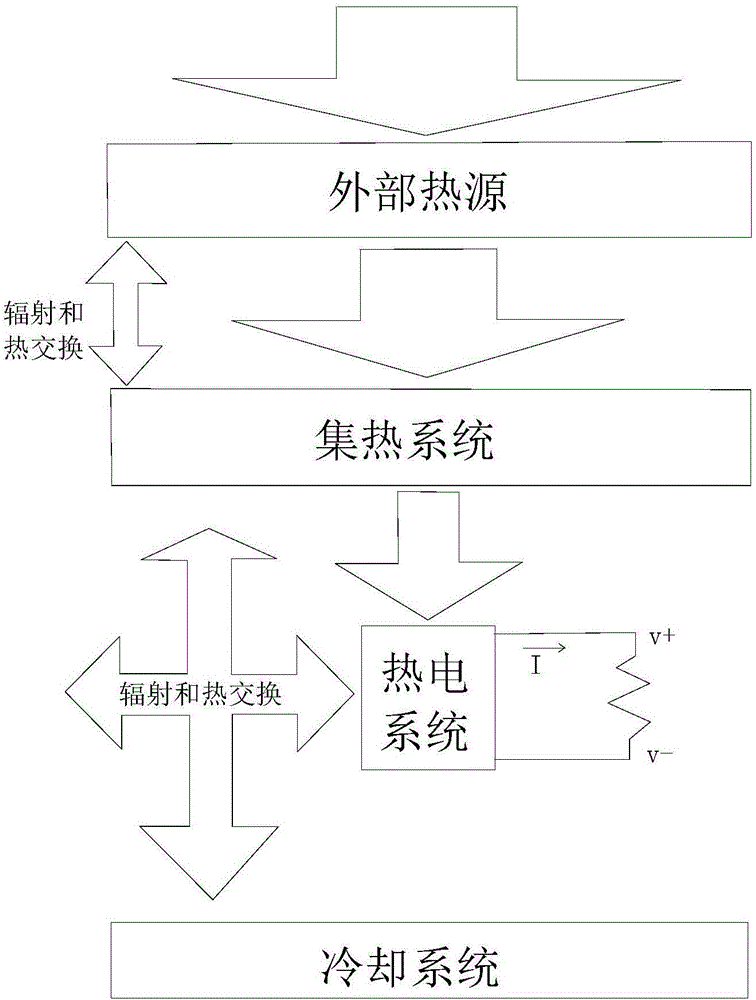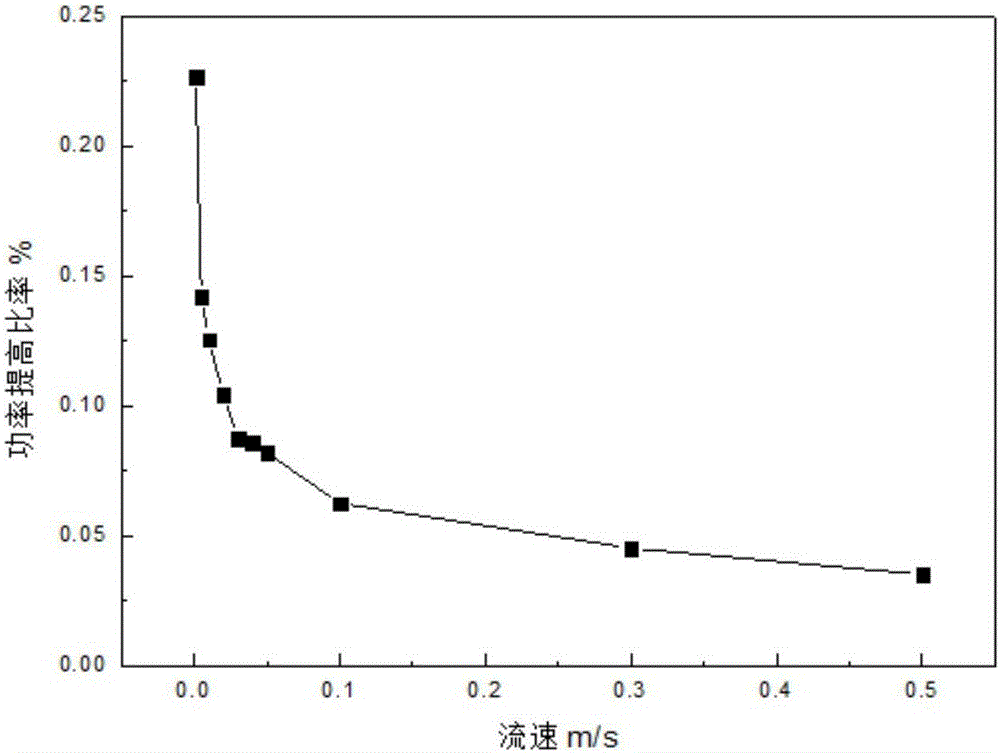Nanofluid-based system for improving solar thermoelectricity generating efficiency
A nanofluid and thermoelectric power generation technology, applied in solar thermal power generation, solar heating systems, solar collectors using working fluids, etc., can solve problems such as the temperature difference between the cold and hot ends, the temperature of the cold end rising, and the efficiency of the STEG system. , to achieve the effect of reducing thermal resistance, reducing heat loss, and enhancing heat transfer at the cold end
- Summary
- Abstract
- Description
- Claims
- Application Information
AI Technical Summary
Problems solved by technology
Method used
Image
Examples
Embodiment 1
[0039] Water and carbon nanotube-water nanofluid are used as the cooling fluid at the cold end, the inlet temperature of the cooling fluid is set at 22°C, and the equivalent diameter of the fluid is 10mm×10mm. Due to the dependence of STEG system power, efficiency and thermoelectric power generation device temperature, when the coolant water flow rate increases from 0.001 to 0.05m / s, the output power increases from 0.647W to 1.68W. At the same time, the efficiency of thermoelectric power generation system increased from 0.0792 to 0.129. When the temperature of the hot end of the thermoelectric power generation system is fixed, the flow rate of the coolant at the cold end is an important factor affecting the output power and system efficiency of the STEG system. Such as image 3 As shown, the enhanced heat transfer effect of the nanofluid increases the output power of the STEG system by 22.7% and the system efficiency by 11% when the speed is 0.001m / s.
Embodiment 2
[0041] Two sets of direct absorption vacuum tubes are used to simulate the solar-to-thermal conversion performance of different fluids. During the test, the vacuum heat collection tubes of the two sets of collectors absorb the same heat under the same sunlight, and the heat exchange medium is transported by the infusion pump. From the installation The heat exchange medium absorbs heat and the temperature rises when the flow channel tube in the vacuum heat collection tube flows through. Figure 4 The temperature change test results within 24 hours are given when different kinds of nanofluids and matrix liquids are used as the heat exchange medium of the solar water heating system. The matrix liquid used is deionized water, the volume content of nanoparticles is 1.0%, and the nanoparticle used There are three kinds, namely Al 2 o 3 , MgO and ZnO. It can be seen from the figure that for the three nanofluids used, the temperature within 24 hours is higher than that of the matrix...
PUM
 Login to View More
Login to View More Abstract
Description
Claims
Application Information
 Login to View More
Login to View More - R&D
- Intellectual Property
- Life Sciences
- Materials
- Tech Scout
- Unparalleled Data Quality
- Higher Quality Content
- 60% Fewer Hallucinations
Browse by: Latest US Patents, China's latest patents, Technical Efficacy Thesaurus, Application Domain, Technology Topic, Popular Technical Reports.
© 2025 PatSnap. All rights reserved.Legal|Privacy policy|Modern Slavery Act Transparency Statement|Sitemap|About US| Contact US: help@patsnap.com



